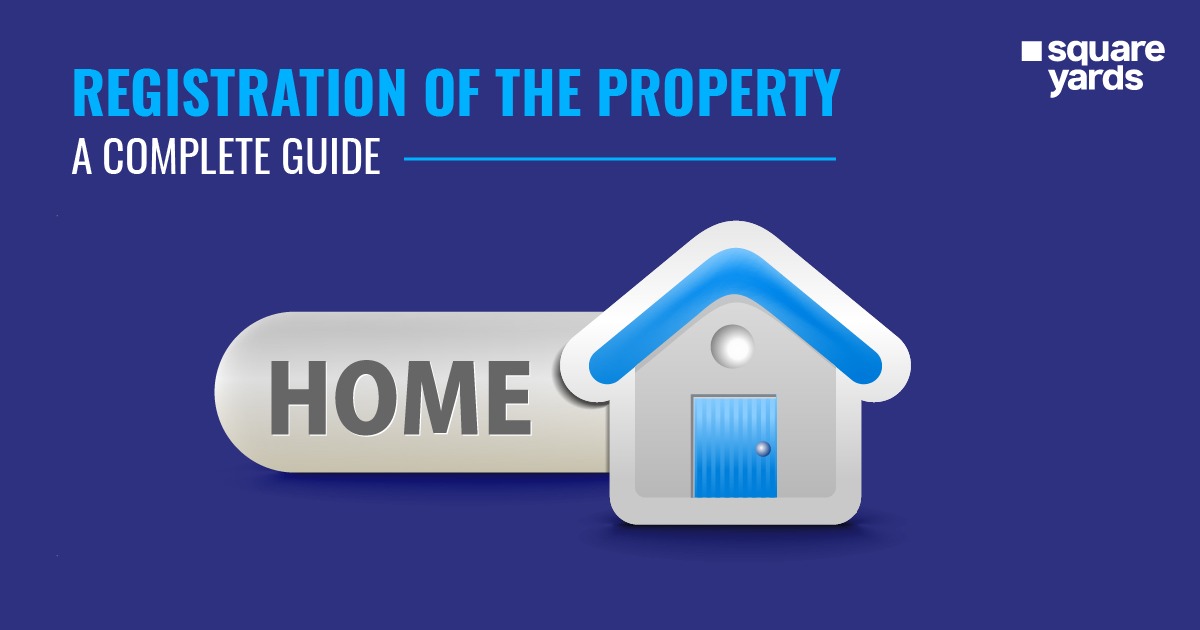Registering your home is a crucial step in the process of property ownership in India. It provides legal validity to your ownership rights and protects your property from disputes or fraudulent claims. Home registration involves a series of steps and documentation, ensuring transparency and authenticity in property transactions. In this guide, we will take you through the home registration procedure in India, helping you navigate the process easily and confidently.
Understanding the procedure of Home Registration
Home registration serves as evidence of legal ownership and protects your property rights. It establishes the legitimacy of your ownership and provides you with legal recourse in case of any disputes. Registering your home also helps maintain property records and promotes transparency in real estate transactions.
Gather the Required Documents
To initiate the home registration process, you need to gather the following essential documents:
a. Sale Deed: This document outlines the transfer of property ownership from the seller to the buyer. It includes details of the property, buyer, seller, sale price, and any conditions or clauses agreed upon.
b. Identity Proof: Carry valid identification documents such as Aadhaar card, PAN card, passport, or voter ID card for both the buyer and seller.
c. Address Proof: Provide address proof documents like utility bills, bank statements, or property tax receipts.
d. Encumbrance Certificate: This document verifies that the property is free from any legal or financial liabilities such as mortgages, loans, or pending litigation.
e. No Objection Certificate (NOC): If applicable, obtain a NOC from the housing society or any other concerned authority stating that there are no objections to the property transfer.
Pay Stamp Duty and Registration Fees
Stamp duty and registration fees are payable during the home registration process. The stamp duty amount varies across states in India and is based on the property’s value or the agreement value, whichever is higher. The registration fees, on the other hand, are a fixed percentage of the property’s value. Calculate the stamp duty and registration fees applicable in your state and make the necessary payments.
Visit the Sub-Registrar’s Office
To register your home, you need to visit the local Sub-Registrar’s Office within whose jurisdiction the property is located. The registration process involves the following steps:
a. Document Verification: Submit the required documents along with photocopies. The Sub-Registrar’s Office will verify the authenticity of the documents and ensure that they comply with legal requirements.
b. Biometric Verification: Provide your fingerprints and photographs for biometric verification purposes.
c . Witness Presence: Arrange for two witnesses who will be present during the registration process. They should carry their identification documents.
d. Property Valuation: In some states, a property valuation process may be conducted by the Sub-Registrar’s Office to determine the property’s market value and calculate stamp duty accordingly.
e. Execution and Registration: The buyer and seller will be required to sign the documents in the presence of the Sub-Registrar or his authorized representative. The registration process is completed once the documents are duly stamped and signed.
Obtain Encumbrance Certificate
After registration, it is advisable to obtain an Encumbrance Certificate (EC) from the Sub-Registrar’s Office. The EC serves as proof that the property is free from any encumbrances or legal liabilities. It is often required for various purposes, such as obtaining loans or selling the property in the future.
Collect Registered Documents
Once the registration process is completed, collect the registered documents from the Sub-Registrar’s Office. These registered documents, including the Sale Deed, will serve as legal proof of ownership.
Update Records and Pay Property Taxes
After home registration, ensure that the property records are updated with the local municipal authorities. This includes updating your name as the new owner and paying property taxes as applicable.
Conclusion
Home registration is a vital step in securing your property rights and ensuring a legal and transparent property transaction. While registering your home, remember to comply with the stamp duty and registration fee requirements, visit the Sub-Registrar’s Office, and complete the execution and registration process. Obtaining an Encumbrance Certificate and updating property records are additional steps that contribute to a smooth and hassle-free home registration experience. By following these procedures, you can establish legal home ownership and enjoy peace of mind knowing that your property rights are protected in India.
FAQs
How is stamp duty calculated, and how do I make the payment?
Stamp duty is calculated based on the property’s value or the agreement value, whichever is higher. The rates vary across states. To make the payment, you can visit the nearest authorised bank or use online payment platforms, as specified by the respective state government.
Where should I go for home registration?
You need to visit the local Sub-Registrar’s Office within the jurisdiction where your property is located for home registration.
What is the role of witnesses in the registration process?
Two witnesses are required during the registration process. They should be present at the Sub-Registrar’s Office during the execution and registration of the documents. Witnesses should carry their identification documents.
How long does the home registration process take?
The duration of the home registration process can vary depending on factors such as the workload at the Sub-Registrar’s Office and the complexity of the transaction. It typically takes a few hours to complete the process, but it can take longer in certain cases.
Do I need to be present in person for home registration?
Yes, both the buyer and seller or their authorized representatives, need to be present at the Sub-Registrar’s Office for the execution and registration of the documents.























